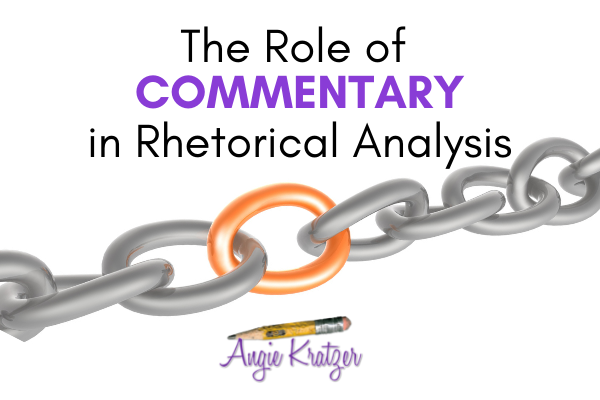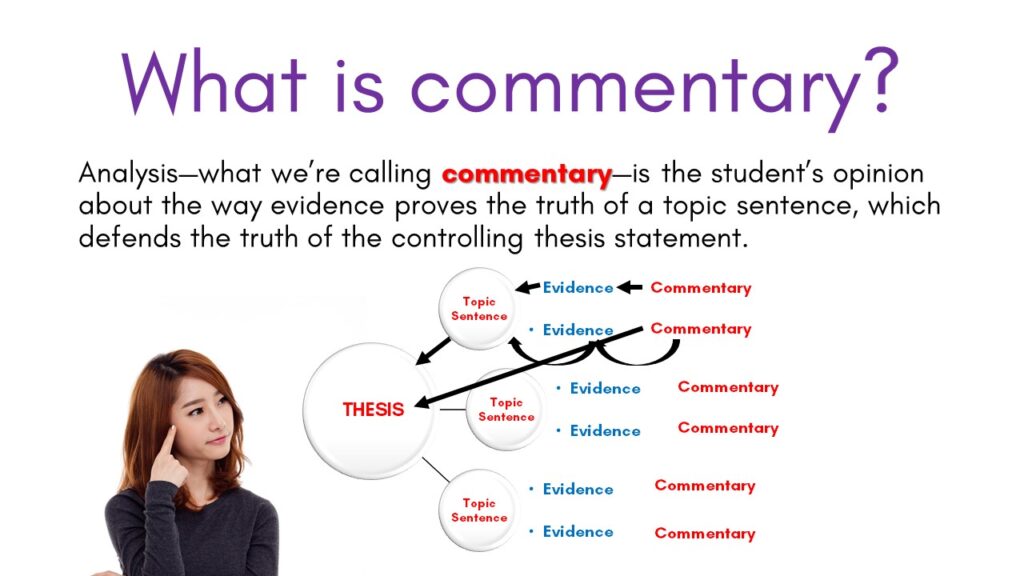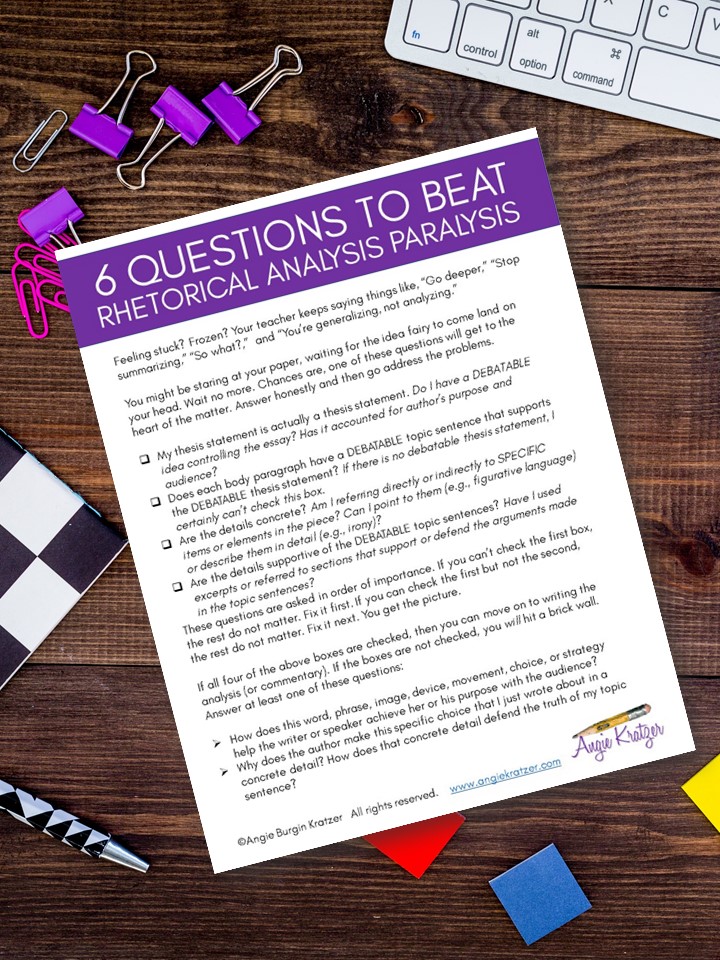Call it what you will—analysis, evaluation, commentary—this piece of rhetorical analysis is OPINION. Evidence is FACT, and commentary is OPINION. (When I’m training students to recognize the difference between the two, we use color coding. You can read more about how I do that here.)
Where students get tripped up is in misunderstanding the actual role of commentary; perhaps they see it as filler or some kind of semi-important text that is loosely associated with nearby evidence. If the latter is the case, they’re in the ballpark, so let’s get those writers into an actual seat. For the purpose of this post, we’ll talk specifically about rhetorical analysis since so many teachers begin with that skill set.

Commentary’s Jobs in Rhetorical Analysis
Job #1: Make Connections
I made this super short video to explain visually what you’ll read below.
WHAT IS COMMENTARY? VIDEO (TWO MINUTES)
Analysis—what we’re calling commentary—is the student’s opinion about the way evidence proves the truth of a topic sentence, which defends the truth of the controlling thesis statement. Here’s how the connecting works. A rhetorical analysis essay has a thesis, which is a controlling idea. All ideas within the essay defend this one. If an idea does not defend this one, it has to go. I call that trimming the fat.
On the front lines of the defense of that thesis are the topic sentences. For a timed essay, we’re probably looking at two or three of those. Each of those topic sentences is a debatable idea that must also be defended. What defends each topic sentence is evidence, factual information taken from the text. Evidence defends the topic sentence, which defends the thesis. Here we go: The job of commentary is to tie the evidence to the topic sentence. This is where the student offers OPINION about how the factual evidence illustrates the truth of the topic sentence.
By connecting the evidence to the topic sentence and the topic sentence to the thesis, the commentary defends the thesis. This chain of defense is the way I wrap my mind around line of reasoning.
Done well, it’s beautiful. Done poorly, it looks like A LOT what we see in student essays.
Job #2: Illustrate Critical Thinking
Commentary separates the men from boys, the wheat from the chaff, the analogies from the metaphors. Every writing rubric I’ve ever seen rewards it heavily.
On the AP Language Question 2 rubric, take a look at this wording for the column that awards all four points for evidence and commentary:
EVIDENCE: Provides specific evidence to support all claims in a line of reasoning. AND COMMENTARY: Consistently explains how the evidence supports a line of reasoning. AND Explains how multiple rhetorical choices in the passage contribute to the writer’s argument, purpose, or message.
That’s THIS illustration! There are only four points to be had on this rubric, and FOUR of them are awarded to the process I described in that short little video above.

A student who creates that defense chain consistently with depth could even earn the sophistication point. That’s five out of six. Without a defensible thesis, that student could never have earned the four points for evidence and commentary because there was nothing to defend. That’s six out of six.
Translation: A student who understands the defense chain of a topic sentence being defended by topic sentences that are supported by evidence with connecting commentary is in the five-six range because that student’s maturity of thought is on full display to a reader.
What Commentary’s Role is NOT
Commentary’s job is not to provide proof from the text, either through direct quotations, paraphrasing, summarizing, or repetition of the actual evidence. When training students to write strong commentary, I suggest that we put off sentence combining; have students differentiate evidence from commentary through color coding so that both you and they can see that each piece of evidence has a tendon, a connector that ties the evidence to the topic sentence.
Once kids know what commentary is and isn’t–and all their English teachers communicate so they’re all using the same terminology–they can produce insightful, connected analysis.
Be on the lookout for more rhetorical analysis tips in your inbox. Not on my email list? You can join here, and I’ll send you a commentary anchor chart.


